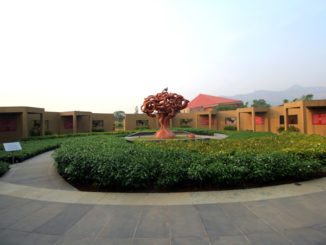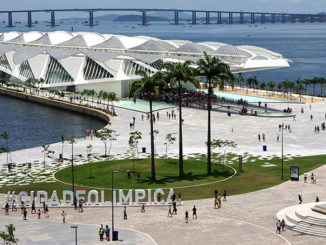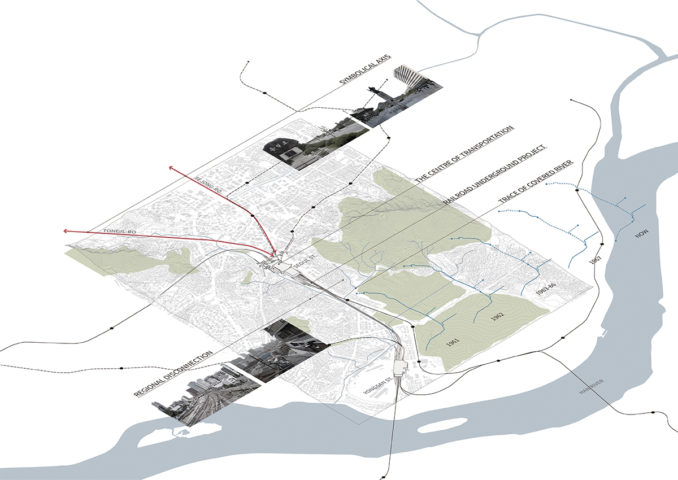
The Gyeongbu Line (railroad connects Seoul to Busan) and Seoul Station (center station) was a downstream called ‘Mancho Stream’. In Hanyang (ancient name of Seoul of Joseon Dynasty), people formed villages and farmed by the stream because of the unimproved water supply system. Also, most of the markets had formed near the Han River because this river was worked mainly for all the transportation.
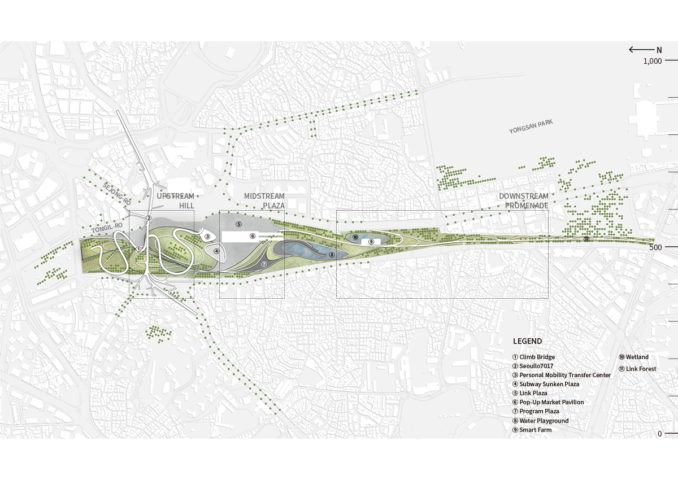
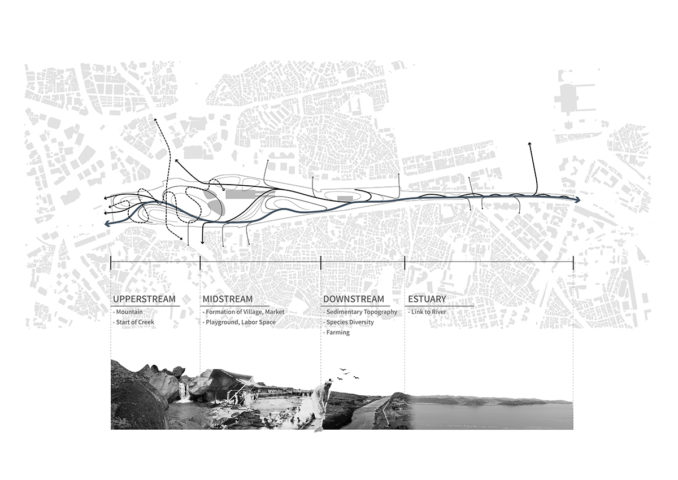
The area near the Mancho Stream was played an important role in the formation of urban structures in Hanyang because it was very adjacent to Gyeongbok Palace (the main palace in Hanyang) and directly connected to the Han River. However, after the construction of the railroads and stations, Mancho Stream lost its function.
The railroad has been built on the ground, so East and West of Seoul have been divided. It became the place where people couldn’t live anymore. In spite of locating in the center of Seoul, this area has been become the most fallen behind regions due to the division and isolation. This stream is mostly covered by roads and now we can only see it near the Yongsan Station and inside the USAG Yongsan (U.S. military)
And now, the railroad of The Gyeongbu Line and Seoul Station is planned to be rebuilt underground. Because of this project, several benefits for the regions can be found. First, the starting point of the Tongil-ro (the only road that leads to North Korea) and the endpoint of the Sejong-ro (which is connected to the main palace “Gyeongbok Palace”) can be joined together. Then, this place will be worked as the starting point of the unification axis between South and North Korea, and the history axis connected to Sejong-ro. Secondly, now Seoul is planning to connect Seoul Station to the satellite cities by GTX-A/B line (metropolitan railway), and also planning to be the first station of Trans-Eurasia train (train goes through Asia to Europe). If this happens, then, this area will be the first place of Seoul to greet others from different regions and overseas. Thirdly, the East, West regions of Seoul can be rejoined and give us an opportunity to regain the traces of Mancho Stream. It means that people can now live in this area again. Lastly, it can connect the green axis of the Han River, USAG Yongsan, which will be turned into a park, and the green of the city. Therefore, this site should not be developed as a dense development but as a symbolic space.
I would like to present a symbolic space design by bringing back the traces of Mancho Stream and connecting the surrounded urban components. With the construction of a railway in the underground, it is difficult to secure the soil and water depth. So it is impossible to restore the original shape of the stream. For this reason, I tried not to restore the original form of Mancho Stream, but to ‘Chase the Trace’ by the influence of stream on the formation of the Hanyang.

Upstream Plaza is placed on the north side of the site. People can overlook the cityscape of Seoul on the hill and can go to the major facilities surrounded by Seoullo 7017.
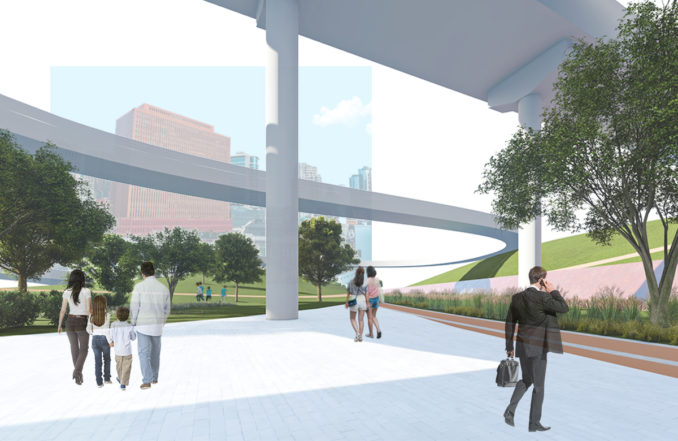
Midstream Plaza is center plaza and flexible space for citizens. This place will be served as the main space for connection to other areas because of adjacent to Seoul station, transit transfer centers, and personal mobility transfer station. Some of the canopy of Seoul Station platform will be maintained and used as a space for market and pop-up programs like concert
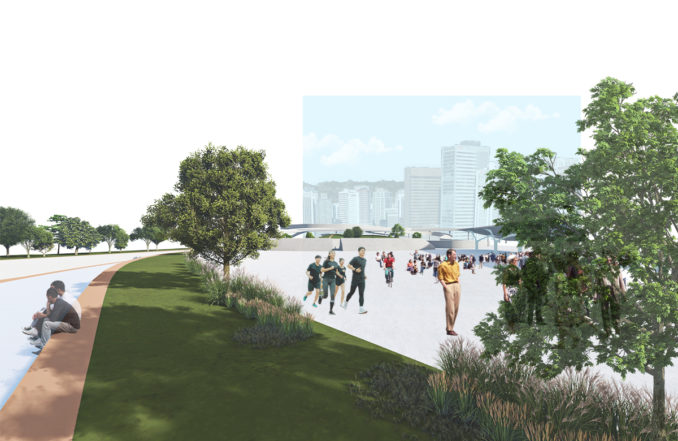
Downstream Promenade is a way that links to Yongsan Park, and it is a space where people can enjoy a picnic in the shade of trees. People will feel as if Yongsan Park has been expanded.
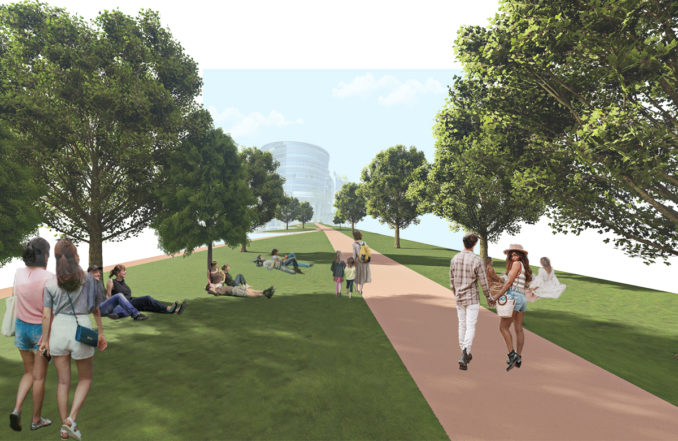
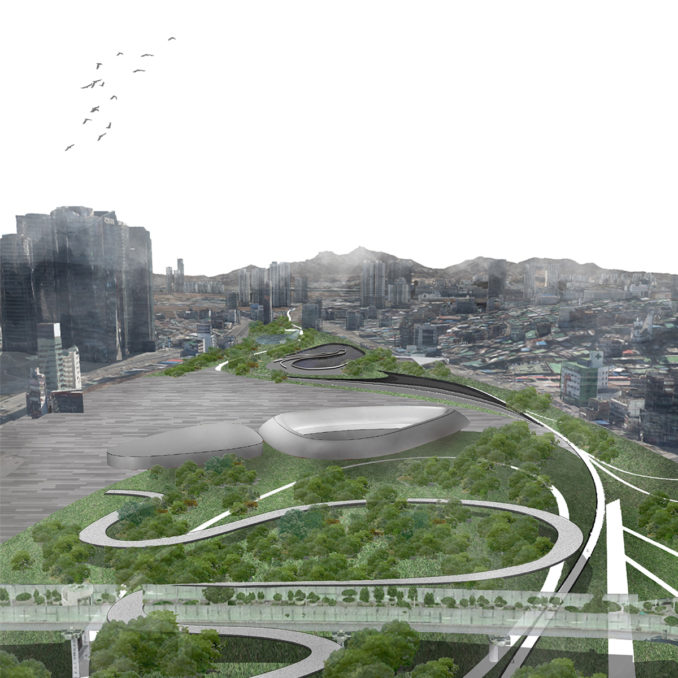
Chase the Trace
Student: Sung Su Kang, University of Seoul, Seoul, Republic of Korea
Imange and Text Credt : © Sung Su Kang

